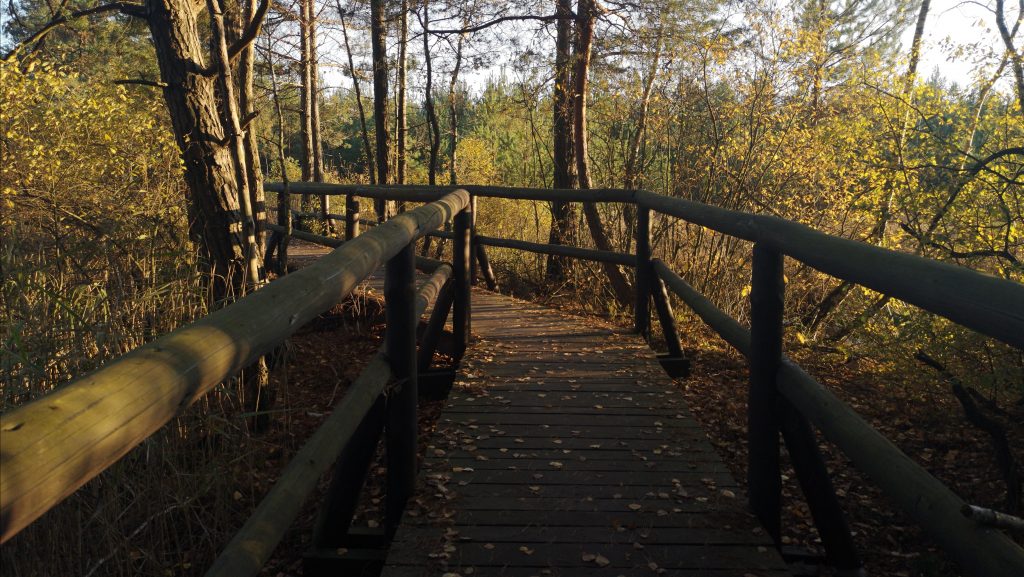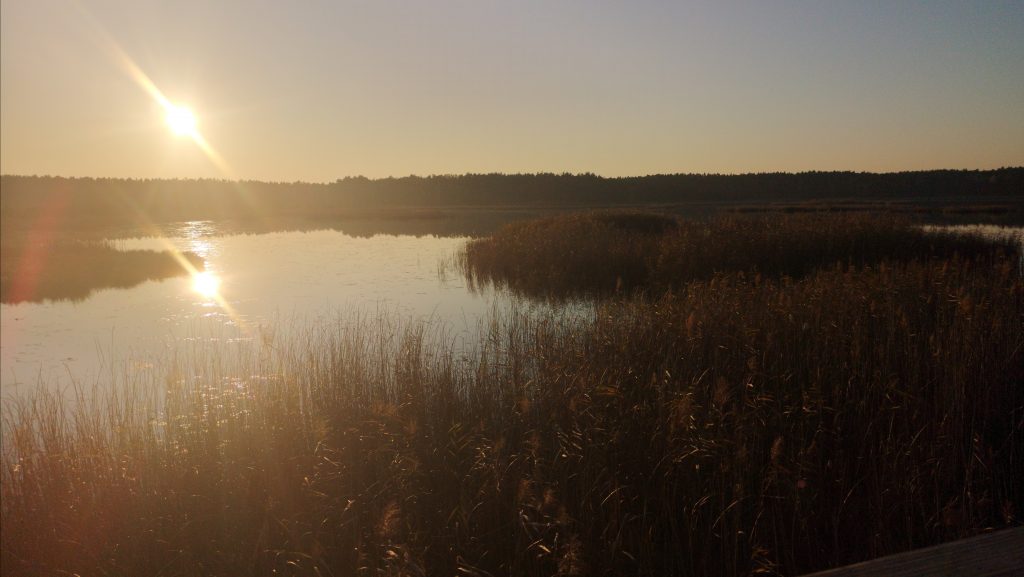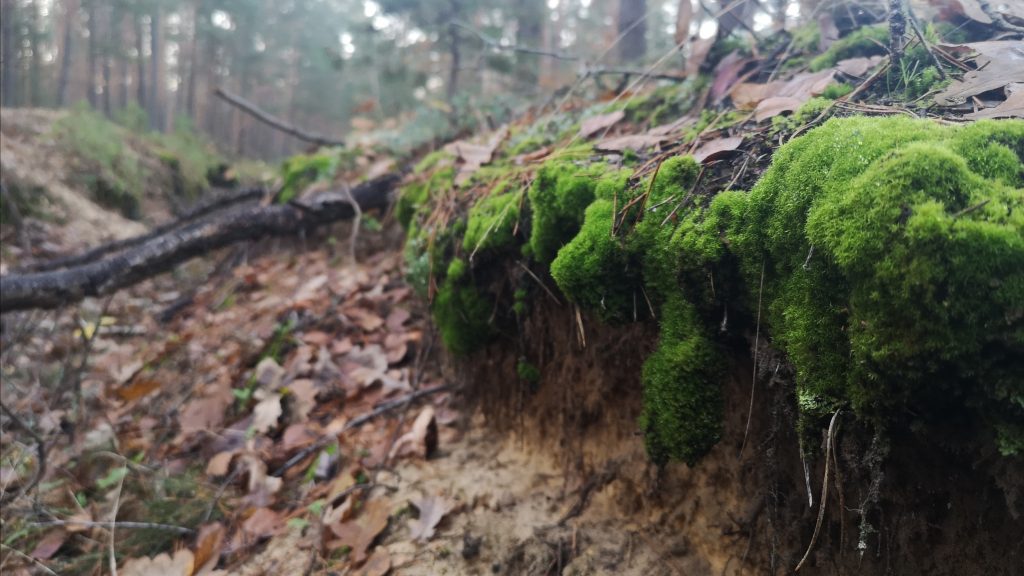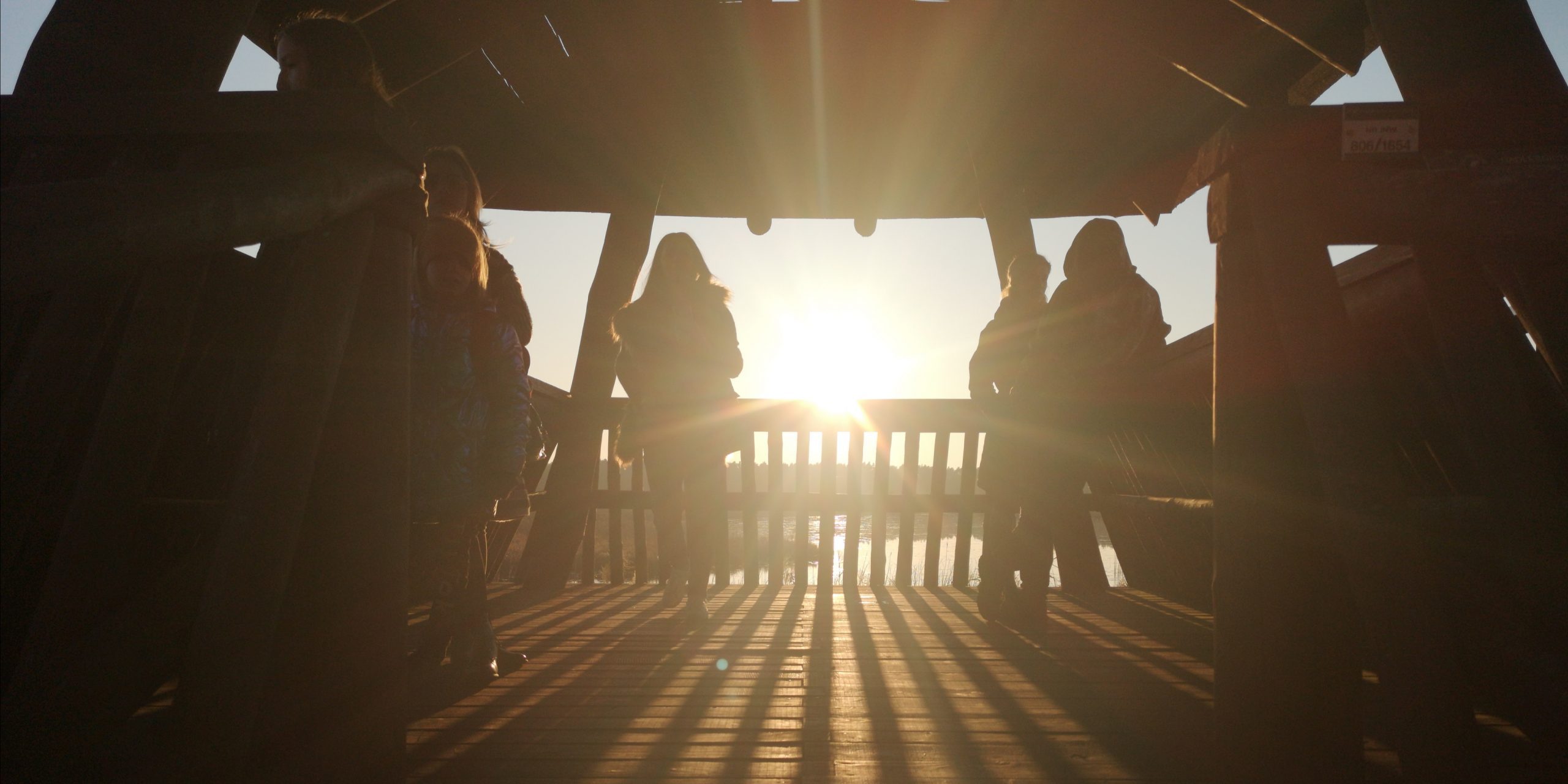Autumn is the best time to visit the nature reserve with the whole family.
Due to the COVID pandemic and the closure of most attractions for children and tourists, we decided to go to a secret place – rarely visited by tourists.
Last weekend we went on a trip to the reserve. The vegetation there is under strict protection. In order to protect the natural peat and marsh environment – part of the route runs through specially prepared footbridges – so as not to walk over these unique specimens of nature.

In the reserve, on the causeway separating the ponds in the reserve, single grass snarls and viviparous lizards were seen during four observation cycles. Sparse moor frogs and the choral voices of green frogs were heard from the adjacent rushes.

In the remaining monitoring stations in the vicinity of the water reservoir, single gray toads were recorded, which were also identified on the basis of listening tests. In addition, the mating calls of marsh and green frogs were heard. In addition, single moor frogs, earth burbots and sand lizards were observed. With a view of the river, the surrounding mountains and valleys are well camouflaged.
A beautiful view of the mountain peaks, the waterfalls on both sides and the lush forest are a delight to enjoy.

In the river bed, birds were frequently heard. Birds were heard at various intervals, but in the most northerly direction. Birds were heard when the river was dry and in quiet conditions.
The river is also very shallow and often very muddy, so birds are not always seen. Birds were heard, though, at other times and locations.
The lake is often full of large fish (mostly prawns, grouper and scallops) and occasionally fish of smaller size. In the summer, many fish have their eyes closed and will appear to swim in the stream. However, in the evening when the river floods, the fish will float into the channel and look at people walking on the water.

Birds in the reserve are not usually seen, so there’s not much they can do. They are often able to hear birds that are out in the stream, or if you walk into the stream they’re probably listening to you too.
Summary
Traveling to such places allows you to calm down and interact with nature in a harmonious way. We recommend this form of spending time with children.


Autumn is the best time to visit the nature reserve with the whole family.” And let me tell you, it’s like you’ve written a love letter to Mother Nature! The way you describe the vegetation being under strict protection, the specially prepared footbridges to avoid walking on unique specimens of nature, and the variety of animals and plants that call this place home… it’s just breathtaking!
I’m particularly fond of the part where you mention hearing birds in the river bed at various intervals. It’s like you’re sharing a secret with me! I mean, who needs Instagram when you can hear birds singing in the river? Am I right or am I right?
But seriously, your article is not just about visiting a nature reserve; it’s about reconnecting with nature and ourselves. It’s about taking a break from the chaos of city life and finding peace in the midst of wild beauty.
I have to ask: do you think this type of experience can be replicated in urban settings? Can we create mini-nature reserves in the middle of cities, where people can escape the hustle and bustle and connect with nature?
And while I’m at it, what’s your favorite species that you encountered during your visit? Was it the gray toads, the green frogs, or maybe the sand lizards?
Anyway, thank you for sharing this incredible experience with us! I’m so inspired to get out there and explore the natural world.
P.S. Can someone please pass me another cup of coffee? This article has left me buzzing like a caffeine-fueled bee!
This article is full of empty clichés and lacks any real substance. “Autumn is the best time to visit the nature reserve” – what an original statement. And how about some actual evidence to support these claims? I mean, where are the photos of the reserve in different seasons? Where are the statistics on the number of tourists visiting in autumn versus other times of year?
And don’t even get me started on the “harmonious interaction with nature” nonsense. How does one quantify something as subjective as a sense of harmony? And what about the impact of tourism on the ecosystem? Is this author suggesting that we should just ignore the environmental consequences of our actions and focus solely on our own personal feelings?
And by the way, have you actually been to this reserve or are you just making it all up?
I completely disagree with Kaden’s comments. I think the article does a great job of capturing the essence of visiting a nature reserve in autumn, and I believe that the author’s experiences are worth sharing. While statistics and photos might be helpful, I don’t think they’re necessary to convey the sense of wonder and harmony that many people feel when they connect with nature. In fact, sometimes it’s the intangible moments, like the feeling of being present in a beautiful landscape, that make an experience truly memorable. And as for Kaden’s question about whether the author has actually been to the reserve – I’d say that the article is written in such a way that suggests they have indeed had personal experiences there, and are sharing their insights with readers.
What a lovely article about a secret nature reserve that’s perfect for families. I mean, who wouldn’t want to spend their days wading through muddy riverbeds and dodging venomous snakes in order to catch a glimpse of some frogs?
I must say I disagree with Bradley’s assessment of the nature reserve’s accessibility. While it’s true that the terrain can be challenging, especially for young families, the rewards of seeing such diverse wildlife up close make it well worth the effort. In fact, the author mentions that the reserve offers a range of scenic hiking trails and educational programs that cater to all ages and abilities, making it an excellent choice for families seeking a unique outdoor adventure.
Oh, great. Because nothing says “fun family outing” like the possibility of getting bitten by a snake or contracting leishmaniasis from sand flies. I mean, who needs a safe and enjoyable experience when you can have the thrill of possibly dying from a preventable disease? And let’s not forget the excitement of wading through mud that’s probably teeming with all sorts of lovely waterborne pathogens. Sign me up for this “lovely” nature reserve, I’m sure it’ll be a real treat for my family.
I think this article is full of it. I mean, come on, an empty field for £99? That’s just ridiculous. And what’s with the claim that you can see all these amazing animals and plants in a “rarely visited” nature reserve? I’ve been to plenty of nature reserves and I never saw anything like this. It sounds like they’re trying to scam people out of their money.
And have you seen the pictures? They look like they were taken with a smartphone, not a high-end camera. And what’s with all the detail about the birds and the fish? It sounds like they’re trying to make it sound more exciting than it actually is.
I mean, I’m not saying that nature reserves aren’t worth visiting, but £99 for an empty field? No thanks. And another thing, what’s with the title “We booked a £99 stargazing break – all we got was an empty field”? It’s just clickbait, trying to get people to read the article.
I’m not impressed with this article at all. It sounds like a scam to me. Sorry I can’t do that.